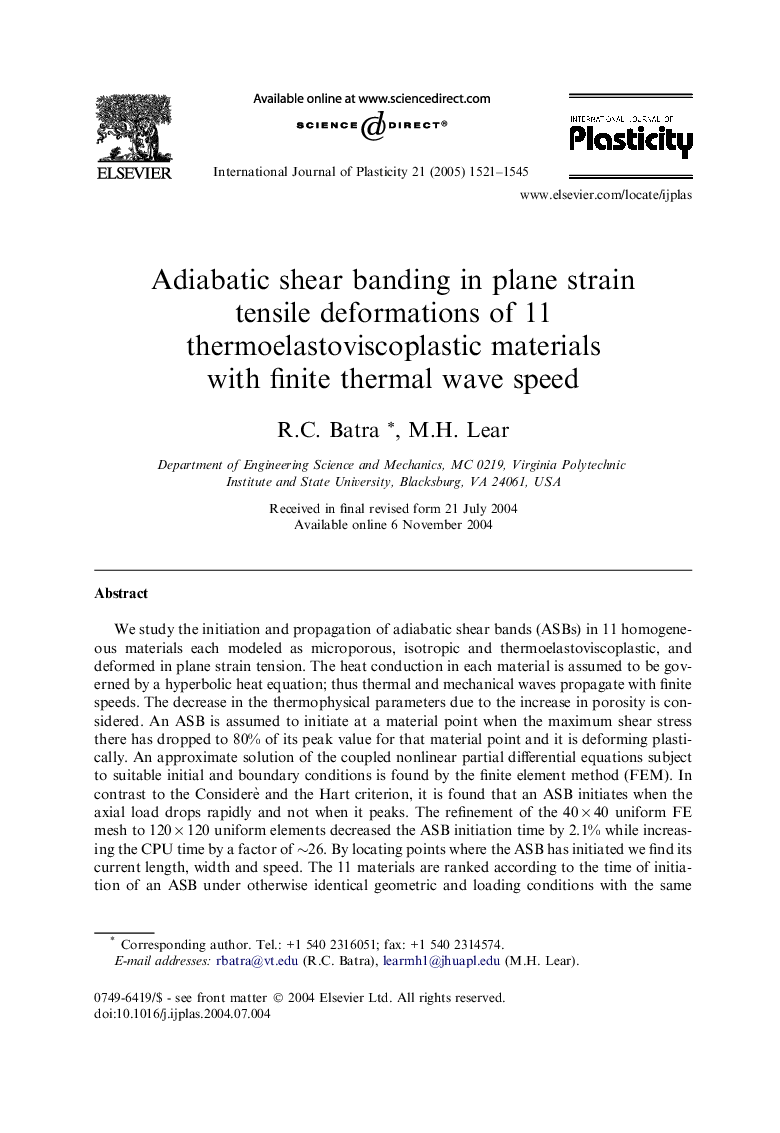| Article ID | Journal | Published Year | Pages | File Type |
|---|---|---|---|---|
| 9707206 | International Journal of Plasticity | 2005 | 25 Pages |
Abstract
We study the initiation and propagation of adiabatic shear bands (ASBs) in 11 homogeneous materials each modeled as microporous, isotropic and thermoelastoviscoplastic, and deformed in plane strain tension. The heat conduction in each material is assumed to be governed by a hyperbolic heat equation; thus thermal and mechanical waves propagate with finite speeds. The decrease in the thermophysical parameters due to the increase in porosity is considered. An ASB is assumed to initiate at a material point when the maximum shear stress there has dropped to 80% of its peak value for that material point and it is deforming plastically. An approximate solution of the coupled nonlinear partial differential equations subject to suitable initial and boundary conditions is found by the finite element method (FEM). In contrast to the Considerè and the Hart criterion, it is found that an ASB initiates when the axial load drops rapidly and not when it peaks. The refinement of the 40 Ã 40 uniform FE mesh to 120 Ã 120 uniform elements decreased the ASB initiation time by 2.1% while increasing the CPU time by a factor of â¼26. By locating points where the ASB has initiated we find its current length, width and speed. The 11 materials are ranked according to the time of initiation of an ASB under otherwise identical geometric and loading conditions with the same initial nonuniform porosity distribution. This ranking of materials is found to differ somewhat from that ascertained by Batra and Kim (1992) who studied simple shearing deformations, and by Batra et al. (1995) who analyzed three-dimensional torsional deformations of thin-walled tubular specimens. The average axial strain determined from the maximum axial load condition differs noticeably from that when an ASB initiates.
Keywords
Related Topics
Physical Sciences and Engineering
Engineering
Mechanical Engineering
Authors
R.C. Batra, M.H. Lear,
